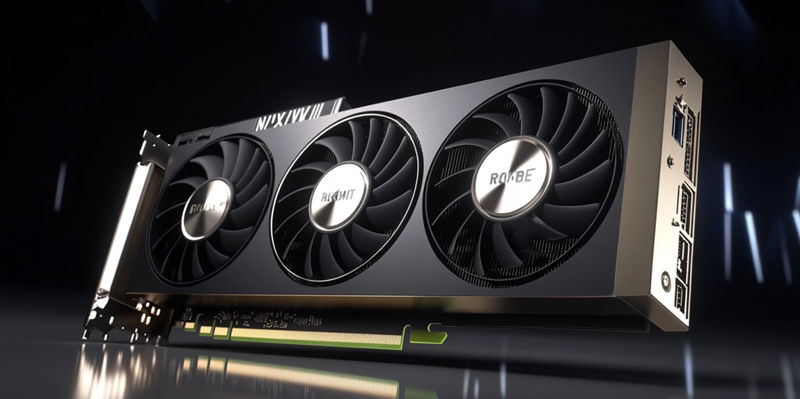Nvidia is back in the spotlight with the launch of its highly anticipated GB200 Blackwell AI hardware and plans for a significant upgrade in 2025 with the GB300 chip. This development is poised to shape the future of AI processing capabilities, emphasizing innovation while balancing logistical efficiency. Central to this unfolding narrative is the potential shift to making the GB300 a socketed chip, rather than one directly mounted on the motherboard. This change, reported by Chiphell, holds strong implications for motherboard yields and the overall ecosystem, bringing Nvidia’s partners like Foxconn into the fray with heightened stakes.
The GB200 Blackwell AI Hardware
Dual GPUs and Arm-Based Grace CPU Integration
The GB200 "superchip" configuration, which merges dual GPUs with an Arm-based Grace CPU, represents a formidable step in AI hardware integration. This fusion aims to deliver unparalleled performance, harnessing the strengths of both GPU and CPU architectures. The underlying technology ensures that the GB200 is not just another incremental upgrade but a significant leap in driving AI workloads efficiently. With these capabilities, the GB200 is positioned to handle complex computations, catering to industries ranging from autonomous vehicles to data centers.
In the current design, if a GPU fails, replacing the entire motherboard becomes a necessity. This approach can be both costly and time-consuming, accentuating the challenges in maintenance and repairs. However, moving to a socketed design for the GB300 chip could resolve many of these issues, allowing for easier and less expensive replacements. This shift not only streamlines Nvidia’s supply chain but also presents a more sustainable and practical approach to hardware management. The emphasis on improving repair and replacement logistics demonstrates Nvidia’s commitment to enhancing both performance and practicality in its hardware solutions.
Balancing Performance and Practicality
While the benefits of adopting a socketed design are evident, it does come with potential drawbacks, particularly in terms of performance. Socketing GPUs might reduce overall platform efficiency, thus creating a fine balance Nvidia must navigate. Despite this, the potential gains in ease of maintenance and repair present an appealing proposition for Nvidia’s tech partners. Companies like Foxconn, significantly involved in manufacturing and assembling Nvidia’s components, could see a substantial boost in operational efficiency and product yields.
The transition to socketed designs might not be just about logistics; it could signal a broader strategic shift towards more modular and adaptable hardware solutions. For Nvidia, striking this balance will involve meticulous engineering and innovation to ensure that any performance trade-offs do not overshadow the practical benefits. This delicate equilibrium is central to Nvidia’s evolving strategy, as it seeks to maintain its position at the forefront of AI hardware innovation while addressing partner and consumer needs more effectively.
Future Prospects of the GB300 Chip
The Move Towards Scalable Replacements
One of the most exciting aspects of shifting to a socketed GB300 chip is how it could revolutionize hardware scalability and adaptability. With current GPU models, any failure or need for an upgrade necessitates a complete motherboard change, a cumbersome and expensive process. The proposed socketed design would enable scalable replacements, making it significantly easier to upgrade or replace components as needed. This change could be a game-changer for industries reliant on AI hardware, offering expanded flexibility and long-term cost savings.
Although this design shift appears beneficial, it raises questions about similar applications in consumer markets. For instance, could this move see implications for GeForce gaming cards? Reports suggest it is highly improbable due to inherent design differences. While server GPUs come with on-package memory, consumer GPUs rely on memory positioned on a printed circuit board. Previous attempts to unite these designs, especially by AMD, concluded that integrating memory into consumer GPUs proved financially unfeasible. These technical and economic hurdles render the likelihood of socketed GPUs for the consumer market quite minimal, but that doesn’t diminish the impact this shift could have on industrial-grade hardware.
Balancing Efficiency and Market Demands
Nvidia’s potential move towards a socketed GB300 is not just a technical milestone; it illustrates a nuanced approach to meeting market demands. Opting for a socketed design would involve trade-offs in efficiency for the sake of practicality and ease of use. For the company’s partners, such a transition would imply smoother post-sale repairs and an overall more manageable supply chain. Foxconn and similar partners would no longer face the bottleneck of full motherboard replacements, enhancing their production and repair cycles.
On the flip side, Nvidia must carefully evaluate how these practical benefits measure up against the performance compromises. The challenge lies in retaining the superior performance Nvidia is known for, even as it explores new design philosophies that prioritize logistical advantages. As the tech giant continues to refine its strategy, the industry will be keenly watching how Nvidia balances these competing priorities, and whether the potential performance trade-offs influence the broader adoption of socketed designs.
Conclusion
Nvidia has again captured the tech world’s attention with the release of its eagerly awaited GB200 Blackwell AI hardware and ambitious plans to launch the GB300 chip in 2025. These advancements are set to revolutionize AI processing, highlighting Nvidia’s commitment to cutting-edge technology while maintaining logistical efficiency. A pivotal aspect of this development is the potential shift to making the GB300 a socketed chip, as opposed to directly mounting it on the motherboard. This modification, as reported by Chiphell, could have significant ramifications for motherboard production yields and the broader tech ecosystem.
The shift to a socketed design holds substantial implications not just for Nvidia but also for its manufacturing partners, particularly Foxconn, which would be pivotal in adapting to the new architecture. If successful, this change could streamline upgrades, enhance flexibility for end users, and potentially lower costs related to motherboard compatibility issues. Nvidia’s pioneering move will likely set new industry standards and open doors to more modular and scalable AI hardware solutions, reaffirming its leadership in the AI hardware sector.

